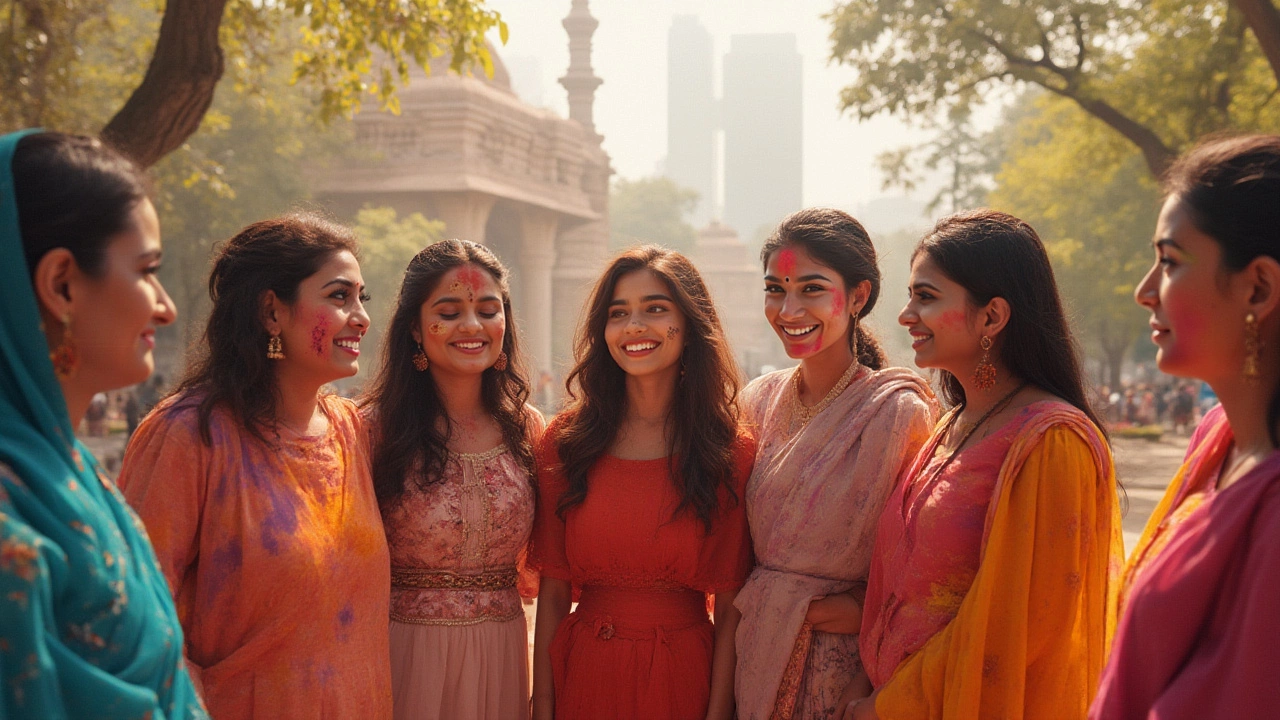
Does wearing sindoor have to mean marriage? Dive into the history, symbolism, and changing norms around sindoor for unmarried girls in today's world.
When talking about Sindoor, a bright red vermilion powder that married Hindu women apply along the hair parting. Also known as sindoor powder, it signals marital status, devotion, and protection. In many rituals the act of applying sindoor enacts a promise of fidelity and is believed to ward off negative energies.
Alongside sindoor, several other bridal items tell a similar story. The Mangalsutra, a sacred necklace tied by the groom during the wedding ceremony represents the same marital bond, often worn together with sindoor for a complete visual pledge. The Bindi, a decorative dot placed on the forehead serves both aesthetic and spiritual purposes, highlighting the third eye and aligning with the energy of the woman’s inner self. In Punjabi traditions the Choora, a set of red and white bangles given to the bride marks the entry into married life, while traditional Bangles, metal or glass bracelets worn on both arms symbolize prosperity and continuity. Together these items create a layered language of commitment that has evolved over centuries.
Why does sindoor stay red? The color comes from turmeric mixed with lime or synthetic pigments, each chosen for durability and cultural resonance. Regions differ: in North India the powder is thick and vivid, while in South India a thinner paste is common, sometimes blended with sandalwood for fragrance. Health‑wise, many women prefer natural ingredients to avoid skin irritation, yet commercial brands now offer hypoallergenic options. Modern brides often treat sindoor as a fashion statement, pairing it with contemporary hair colors or minimalist looks, but the core meaning stays the same – a public sign of partnership. Applying sindoor isn’t just a moment; it’s a ritual that involves family members, often a mother‑in‑law or elder sister, who blesses the bride by placing the powder. This act reinforces social bonds and passes cultural knowledge to the next generation. In diaspora communities, the ceremony may be adapted to fit smaller spaces, but the symbolic gesture remains a cornerstone of identity. Today, designers are re‑imagining sindoor‑inspired pieces: jewel‑embedded applicators, scented powders, and even temporary tattoos that mimic the traditional look. These innovations show how an ancient practice can adapt without losing its essence. Whether you’re planning a wedding, exploring Indian culture, or simply curious about the symbolism, understanding sindoor means seeing how color, ritual, and community intertwine. Below you’ll find a curated collection of articles that unpack related topics—from the nuances of mangalsutra designs to the deeper meaning behind the bindi, choora customs, and even practical guides on safe product choices. Dive into each piece to see how these traditions intersect and evolve, giving you a richer picture of Indian bridal heritage.

Does wearing sindoor have to mean marriage? Dive into the history, symbolism, and changing norms around sindoor for unmarried girls in today's world.